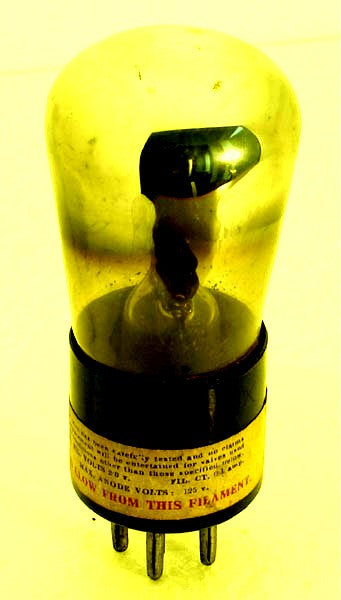
VALVE TYPES & MANUFACTURING TECHNIQUES (ii)
Share
A filament current drain of 1A was a real problem and the search was on to achieve good electron emission from a reduced filament current. Early efforts were based on the use of alkaline earth metalled filaments where tungsten was doped with thorium, barium or strontium oxides before drawing into filament wire. Development progressed until a final configuration of tungsten wire, overcoated with a thorium oxide layer was settled upon. This greatly reduced filament current consumption and had the side effect of a valve loosing it's bright but homely glow. As a consequence, these new low current valves were termed DULL EMITTERS and often, retailled valves would carry a paper label adhering to the envelope stating that the valve wouldn't glow - just like the example in our photo below: -

The greatly reduced filament consumption of the DULL EMITTER valve allowed the use of a comparatively small two volt accumulator , hitherto valves used a whopping great accumulator of high AH capacity to power their four volt filaments.
And so it was until the late 1940s where the standard voltage for battery valves was 2V. Interestingly by the 1950s, Mullard introduced a new series of miniature battery valves - the D series (there will be a future blog entry on these). The D series battery valves were rated with a 1.4V filament consuming 50mA , progress indeed.
